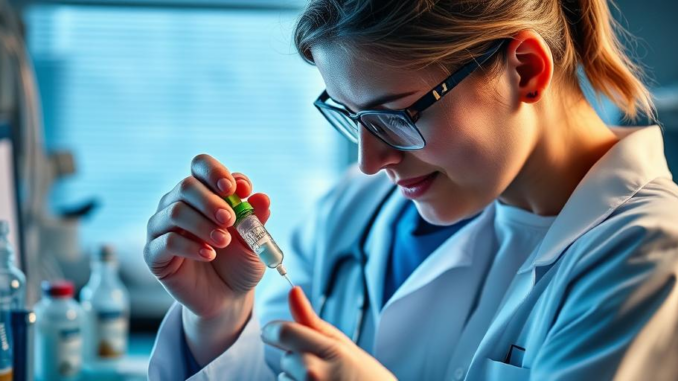
Summary
New research suggests GLP-1 receptor agonists, like Ozempic, may significantly reduce opioid overdoses and alcohol intoxication in individuals with substance use disorders. Studies show a 40% reduction in opioid overdoses and a 50% reduction in alcohol intoxication among those taking these medications. This breakthrough offers a potential new avenue for addiction treatment, though further research is needed.
** Main Story**
There’s some genuinely exciting news coming out of addiction research. A recent discovery suggests that GLP-1 receptor agonists – think drugs like Ozempic and Mounjaro, typically used for diabetes and weight loss – might offer a significant leg up in the fight against opioid and alcohol addiction. Could this be a game-changer, offering a new lifeline to those struggling with these incredibly challenging conditions? It certainly seems that way, but let’s dive into some of the detail.
Promising Results – But Let’s Stay Grounded
Several recent studies have really started to dig into how GLP-1 receptor agonists impact addiction. For example, one study, featured in Addiction, looked at data from over a million patients. The results? A whopping 40% reduction in opioid overdoses among people with opioid use disorder (OUD) who were taking these medications. That’s huge. And it doesn’t stop there; individuals with alcohol use disorder (AUD) saw a 50% decrease in alcohol intoxication. Pretty impressive, right?
Similarly, another study, this time in JAMA Network Open, focused on the connection between semaglutide (that’s the active ingredient in Ozempic and Wegovy) and opioid overdoses in patients dealing with both OUD and type 2 diabetes. The findings echoed the first study, showing a much lower risk of overdose for those on semaglutide compared to other anti-diabetic meds. I remember when I first read these studies; I thought there must be a catch! But the data seems pretty compelling. Although, it should be said that more research is warranted.
Decoding the Science: How Might These Drugs Actually Work?
Now, let’s talk about the ‘why.’ How exactly are these drugs having this effect? It turns out researchers are still piecing together the puzzle, but the current thinking revolves around how these drugs interact with the brain’s reward system. See, GLP-1 receptor agonists target the mesolimbic system. This is the brain region that deals with appetite and reward, but it also has a big say in addictive behaviors. So, by tinkering with this pathway, these medications may be able to dial down cravings and weaken the rewarding effects of opioids and alcohol. Basically lowering the risk of overdose and intoxication. There is prior research and smaller clinical trials to support this hypothesis, which is helpful.
A New Era for Addiction Treatment?
It goes without saying, but the results of these studies could have a significant impact on addiction treatment. I mean, think about it: current treatments for OUD and AUD often struggle with limited effectiveness and high relapse rates. If GLP-1 receptor agonists can genuinely reduce overdoses and intoxication, that’s a new potential avenue for intervention. It’s like adding another tool to the toolbox for clinicians and individuals working hard to overcome addiction. But before we get too excited, it’s important to keep a few things in mind.
Let’s Not Get Ahead of Ourselves: Further Research and a Dose of Caution
While these initial results are definitely encouraging, experts are stressing the need for more research. And frankly, I agree with them. We need larger, randomized controlled trials to really confirm how well GLP-1 receptor agonists work and to fully understand their safety profile when used for addiction treatment. Importantly, these medications are currently prescribed for diabetes and weight loss, so using them ‘off-label’ for addiction requires careful consideration and close monitoring by a healthcare professional. It’s a conversation you absolutely need to have with your doctor if you’re considering this route.
That said, this discovery is a significant leap forward in our ongoing efforts to combat addiction, offering a glimmer of hope for a brighter future for those impacted by these disorders. It really does feel like we’re on the cusp of something big, but as with any scientific breakthrough, it’s crucial to proceed with cautious optimism. But it’s a very good sign.
Please note: Information is current as of April 6, 2025, and may change as further research becomes available.


Be the first to comment